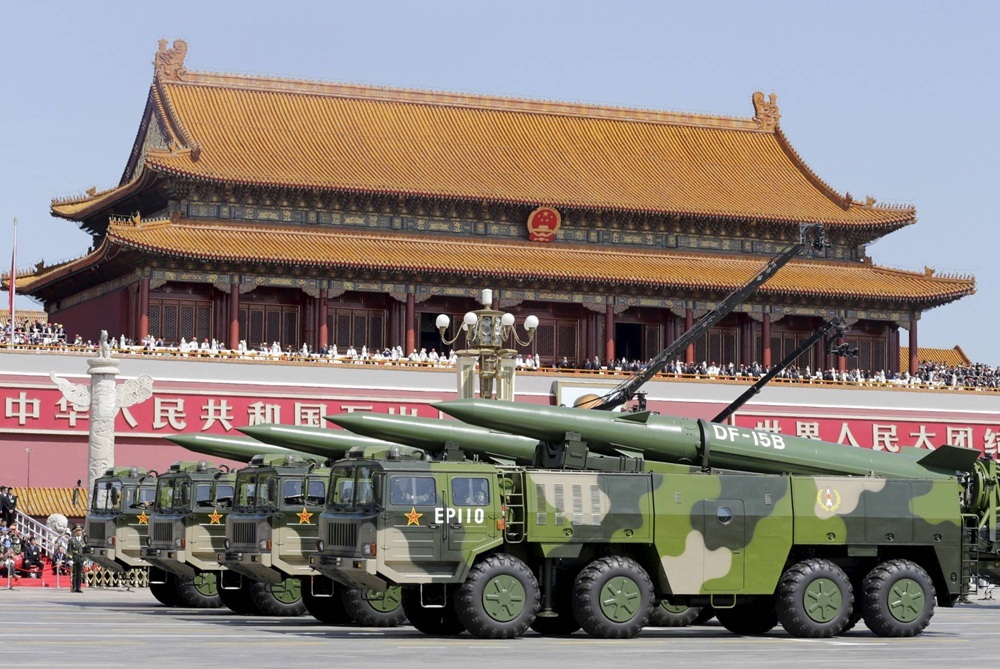The Role of China's Military Industry in Shaping a Multipolar World
TEHRAN (Defapress) - In a world where political and military controversies in Washington dictate the news, China is quietly expanding its powerful and discreet military network worldwide. This network, built not through media fanfare but by relying on principles such as affordability, easy and rapid access to weaponry, and deep, sustainable cooperation, is redefining global security dynamics.

The Role of China's Military Industry in Shaping a Multipolar World
This approach has gained increasing traction, particularly in the Global South, where countries seeking defense independence and reduced reliance on traditional powers are turning to China. This quiet yet purposeful movement is reshaping the foundations of the global order, reflecting a strategy focused on empowering partners and fostering self-reliance.
China’s Military Self-Sufficiency
According to data from the Stockholm International Peace Research Institute (SIPRI) for the years 2020 to 2024, the global arms market continues to face stark inequalities. The United States holds the top spot with a 43% share of military exports, followed by France with 9.6% in second place. Meanwhile, Russia has experienced a significant decline, with its share of the arms market dropping from 21% to 7.8%. In this landscape, China, alongside Germany, has solidified its position among the top five military exporters.
China’s defense industry has reduced its reliance on arms imports from 5.1% to just 1.8%, marking a significant step toward self-sufficiency. This remarkable reduction highlights China’s industrial capabilities and underscores a strategy that has transformed Beijing into a stable arms exporter.
Strategic Partnerships Across Continents
Over the past five years, China has delivered arms to 44 countries, with nearly two-thirds of its exports directed to Pakistan. This relationship transcends mere commercial transactions, encompassing joint weapons production, advanced training, and the exchange of military doctrines. Pakistan has received JF-17 fighter jets, various naval vessels, Hangor-class submarines, modern drones, and advanced air defense systems from China, with 81% of its military imports sourced from Beijing in 2024.
Serbia and Thailand are also major buyers of Chinese weaponry. Serbia recently acquired FK-3 air defense systems and CH-92A drones, making it one of the few European countries diversifying its military suppliers to enhance defense independence. Thailand has purchased Chinese tanks and naval equipment. Other countries, such as Bangladesh and Myanmar, rely on Chinese training aircraft, small arms, and armored vehicles.
In Africa, Nigeria and Algeria are key buyers of Chinese tanks, missiles, and drones. In the Middle East, Oman and Saudi Arabia have turned to Chinese drones and missile systems. In South America, Venezuela and Bolivia have adopted Chinese military vehicles and small arms. The presence of Chinese equipment across all continents, even near Europe’s borders, demonstrates China’s unique ability to understand each country’s needs and provide tailored solutions.
From 2020 to 2024, China supplied 18% of Africa’s arms requirements, surpassing Russia to become the primary supplier in West Africa. This success stems from offering equipment tailored to the specific needs of African clients, enabling them to better manage their security challenges.
In Asia, China accounts for 14% of the region’s military needs, ranking third behind the United States (37%) and Russia (17%). Notably, many Asian countries, despite Western warnings, have gravitated toward Chinese options, choosing advanced drones, tanks, missile systems, and fighter jets. A prominent example is the performance of Chinese J-10 fighters in India-Pakistan border clashes, which resulted in the downing of three French Rafale jets, among the world’s most advanced fighters. This battlefield success has drawn global attention to China.
Diverse Armament Portfolio
Unmanned drones are the cream of the crop of China’s arms exports, widely sold in the Middle East, Africa, and regions subject to stringent U.S. and European export restrictions, creating an open market for China.
Today, Beijing offers a comprehensive array of conventional military systems, including advanced fighters like the JF-17 and J-10, heavy armored tanks such as the VT-4, naval ships, submarines, and missile boats to bolster maritime capabilities. Modern air defense systems like the FK-3 and dual-use technologies, such as AI-equipped drones and satellite surveillance systems, are also part of China’s export catalog. This unparalleled diversity positions China alongside the United States and Russia as one of the few countries capable of offering complete solutions across all domains of warfare.
The Appeal of Chinese Weaponry
China’s appeal to various governments lies in a smart combination of economic, political, and military factors. Chinese weapons are more affordable and delivered faster, a critical advantage. China’s transactions typically come without political conditions or restrictions on weapon use, unlike similar contracts that often include such limitations.
Beijing’s willingness to share technology, as seen in the joint JF-17 project with Pakistan or drone production agreements with Saudi Arabia, demonstrates flexibility in transferring knowledge and enabling local production. As China is not bound by export control regimes or missile technology control systems, it can easily sell its advanced and highly sophisticated drones. This approach has made China a reliable partner for countries seeking to enhance their defense capabilities and maintain independence.
Despite these successes, China faces numerous challenges, which it often turns into opportunities for innovation. The Chinese military has not engaged in significant or widespread conflict since 1979, allowing Beijing to focus on developing advanced technologies.
With a pragmatic and forward-looking approach, China provides reliable, cost-effective, and condition-free defense solutions to its partners. This strategy not only equips countries with military hardware but also empowers them to make independent decisions. Quietly and purposefully, China has built a network of defense cooperation that promises a more balanced and multipolar future for global security.
